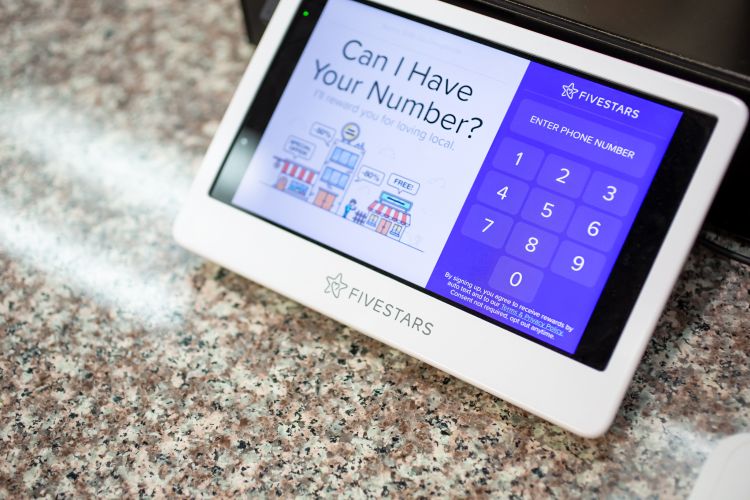March 20, 2025
Maggie Wise
Principal, Assurance & Restaurants Practice Leader
Atlanta, GA

Related Services
Related Industries
< Back to Resource Center
Loyalty programs have become a key component of modern restaurant operations, helping businesses enhance customer engagement while driving sales and revenue. In 2024, Punchh, a nationally recognized marketing and loyalty platform, published a report measuring the impact of such loyalty rewards programs. In early 2025, the National Restaurant Association (NRA) also released a survey that examined trends in the restaurant industry, including the growing significance of loyalty programs. These findings highlight the importance of well-structured loyalty programs in a competitive marketplace.
Overview of Loyalty Programs
Restaurant industry operators are recognizing the benefits of loyalty programs that provide tailored value to customers. These programs offer a competitive advantage by allowing restaurants to engage directly with consumers through personalized promotions and marketing efforts. By leveraging loyalty programs, restaurants can:
- Encourage repeat visits through promotional deals and rewards.
- Increase customer retention by offering exclusive perks.
- Enhance engagement on digital platforms, such as mobile ordering and app-based interactions.
- Introduce new menu items to a receptive audience through targeted incentives.
- With the rise of digital ordering and mobile applications, restaurants can seamlessly integrate loyalty programs to influence purchasing behavior and deepen customer relationships.
Aligning With Current Trends
The NRA’s 2025 survey underscores key trends that reinforce the value of loyalty programs. Digital ordering continues to rise, making it easier for restaurants to connect with customers and encourage participation in loyalty initiatives. The survey also found that value-conscious dining is a major trend, with 95 percent of restaurant operators acknowledging that consumers are more focused on getting the most out of their money than ever before.
Among the most engaged demographics are millennials (ages 29-44), who are particularly responsive to real-time promotions. The survey found that 92 percent of millennials are likely to take advantage of restaurant promotions in their area, followed closely by Gen Z consumers. Many millennials also have young children, making them a prime target for customized family-friendly promotions. Restaurants that use loyalty programs effectively can craft offers specifically designed to attract this demographic, boosting both customer satisfaction and sales.
When asked about the importance of loyalty programs in choosing a restaurant, a significant number of customers indicated that membership in a rewards program influences their dining decisions. This highlights the potential for restaurants to use loyalty programs as a strategic tool to build brand loyalty and drive revenue.
Benefits of a Rewards Program
- Building Customer Relationships – Loyalty programs foster a sense of exclusivity, encouraging customers to feel more connected to a brand. By offering perks that are only available within the program, restaurants can enhance customer engagement and loyalty.
- Driving Sales and Traffic – Many consumers actively seek discounts and incentives when choosing where to dine. A well-structured loyalty program creates added value, enticing customers to return to a restaurant more frequently.
Collecting Valuable Customer Data
Loyalty programs provide restaurants with critical data and insights into customer behavior, allowing for:
- Dynamic Pricing: Restaurants can implement flexible pricing strategies to optimize sales and maintain profit margins.
- Personalized Customer Experience: By analyzing past purchases, restaurants can offer rewards tailored to individual preferences.
- Behavioral Insights: Understanding customer habits—such as frequent visits on certain days (e.g., a parent stopping in for a meal after a child’s soccer practice every Tuesday)—can help restaurants refine their marketing strategies.
- Optimized Promotions: Geolocation data can allow restaurants to send targeted offers. For instance, if a customer in Atlanta is experiencing a rainstorm, a restaurant can push a promotion for delivery services.
Accounting Treatment for Loyalty Programs
From an accounting perspective, loyalty programs must be properly recognized in financial statements to keep compliance with revenue recognition standards – the following key considerations can help you with best practices for accounting treatment for your loyalty programs:
- Separate Performance Obligation: Loyalty rewards are considered separate performance obligations since they offer customers a material right. A portion of the transaction price must be allocated to these rewards based on their relative standalone selling price.
- Allocation of Transaction Price: The transaction price must be divided between the actual goods or services sold and the loyalty points awarded. If the loyalty points are not sold separately, their standalone selling price must be estimated.
- Revenue Recognition: Revenue associated with loyalty points is recognized when the customer redeems them. Restaurants can also recognize breakage revenue for points that are unlikely to be redeemed, under specific conditions.
- Principal vs. Agent Considerations: If loyalty points can be redeemed with third parties, restaurants must assess whether they act as a principal (responsible for providing rewards) or an agent (facilitating rewards through another party).
For most restaurant loyalty programs, revenue is deferred based on the estimated value of the award points customers earn. This deferred revenue is recorded as a liability and only recognized as revenue when the customer redeems the reward, which helps your financial statements accurately reflect the obligations associated with loyalty programs.
Windham Brannon Can Help
Loyalty programs have become a vital tool in the restaurant industry, offering operators a way to enhance customer relationships, drive sales and collect valuable data. As digital ordering continues to grow and consumers prioritize value-driven dining experiences, restaurants should invest in effective loyalty strategies to remain competitive. By understanding both the marketing and financial aspects of loyalty programs, restaurant operators can enhance their impact and create long-term customer engagement. Windham Brannon’s Restaurant Practice can help you determine how loyalty programs impact your business as well as help you with accounting considerations so you stay on top of your financial statements and remain compliant with revenue recognition regulations. For questions or more information, contact your Windham Brannon advisor today, or reach out to Maggie Wise.


